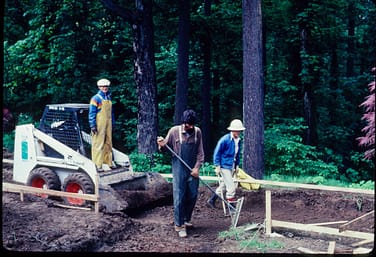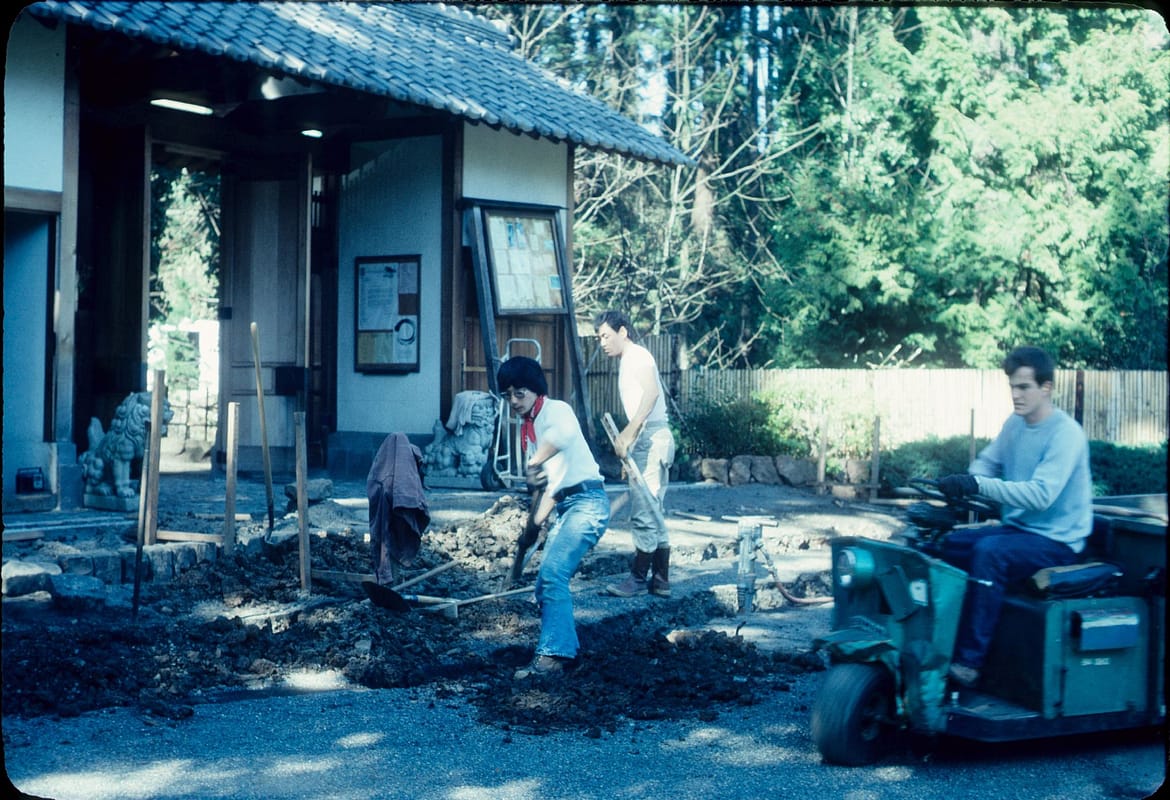Long before the mighty trees that shade the path walkway up to Portland Japanese Garden stood as tall as they do today, before the pavilion was housing lively art exhibitions, and back when the Garden was comprised of only a handful of fully completed Garden spaces (now there are eight), a young man – fresh out of Oregon State with a degree in Landscape Architecture stepped foot on the gravel pathway to the Garden for his first day on the job.
“It was my first experience with Japanese gardening. I was 24-years-old when I started here and at that time, everything was new to me.”

In 1977, a young Michael Kondo was given the title of gardener, handed his tools on a belt and started something that turned into more than just a job – something that has spanned most of his lifetime.
Then Garden Director, Masayuki (Masa) Mizuno had only been at the Garden a few months when Kondo started. “After Masa was Kichiro Sano, Takao Donuma, Toru Tanaka, and now Sadafumi (Sada) Uchiyama. You can’t help but learn so much working with all of these guys. They all had their own specific quirks.” The Natural Garden was in place at the time, Kondo said, but looked nothing like what we see today. There was a large square reflecting pond and it looked somewhat contemporary.
“I was part of redoing the Natural Garden. All the directors worked on redoing that garden. In fact, the Natural Garden and the Tea Garden were the two that every garden director worked on since I’ve been here. I was here as the Tea Garden fully came together.”

Kondo helped place all the stones you see today around the pavilion, he was there for the pavilion’s dedication on the day Mt. Saint Helens erupted, and he added the cobblestone steps in front of the Nezu gate. The history of the Garden is long, and Kondo helped write it. While the Cultural Crossing expansion this year helped transform the Garden site that fifty years ago was the empty cement landscape of the former Zoo, the Garden was only open to the public for about ten years when Kondo started.
“Without question, this past year has been incredibly memorable. Doing the construction up here. Seeing them build the Castle Wall was incredible. It’s not so much about what the Garden has meant to me over the years, but what it has given to this country. Prior to Masa coming here, no one had ever thinned or pruned the way you see it here today. Also, just the amount of interest in a Japanese garden has grown tremendously.

Kondo said he tells people that we are going through a renaissance period of sorts because going to a Japanese Garden seminar back in the 1970’s was unheard of.
“Now, there’s all kind of interest and what’s really amazing is just the amount of young people involved. Prior to this, you had Sunset magazine as a guide to Japanese gardens. That’s great, but that was it. We’ve set a precedence here. You speak about Portland Japanese Garden and how we’re thought to be number one outside of Japan. I think some Japanese folks think it’s even better than some gardens they’ve seen in Japan.”
In true humble Michael Kondo fashion, when asked if he thinks he had a part in setting that precedence, he quickly credited the Garden directors. “They brought the authenticity to this Garden. And then Sada. All of the directors prior to Sada were workers, so when we’d be doing construction, it was ‘put this here, put this there.’ Sada is actually teaching what he’s doing. He’s explaining what he’s doing as he’s doing it. ‘We are moving this rock for this reason.’ He talks about composition of the landscape. That’s what is really neat about what’s being done here. He’s an educator.”
Kondo said he is honored to work at the Garden because he has seen what it has become. “I also tell people that when I started, there were seven people working here and now we’re at more than a hundred employees.” The jobs we do – and no doubt something we do for forty years – will shape who we are, our lives and experiences. Kondo said the Garden has taught him to keep things light.
“I’ve had to gain a sense of humor. Wait until you’re sixty – you’ll either develop a sense of humor or you’ll turn into this crotchety old guy so I went the way of humor.”
And the Garden’s values of connection to nature and the art of craft have helped him he said, when his blood pressure starts to rise.
“It’s a roller coaster. I think what excites me is just seeing the young people that are getting involved. Our younger gardeners like Adam Hart, Lincoln Proud, Caleb Hendrickson, Francheska Snyder – just seeing the passion they’ve got. I didn’t have that when I started. Just the focus that they have on what they’re doing. And then going to seminars – and you see other young people that just have this drive that, sometimes makes me wish I was younger. I always tell people I feel like an old, elderly dog with all these little puppies all around me and I just want to be left alone and they’re like ‘let’s do this, let’s do this! Let’s do that, let’s go play!’ ” said Kondo laughing.
When Kondo retires in December, he and his wife are turning their focus on selling their home. “We’ll travel for sure, but the focus right now is getting the house ready to put on the market next year. So, that’ll be exciting because we’ve been in our house for 23 years. We just want something smaller, and very simple.”
